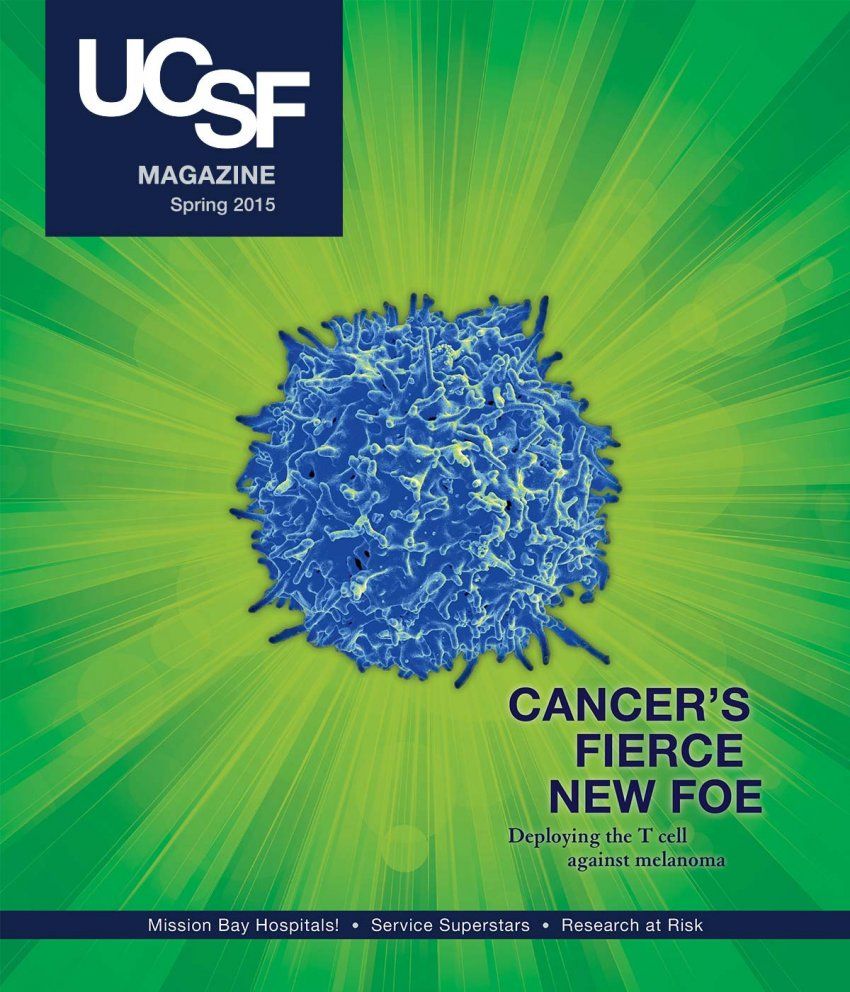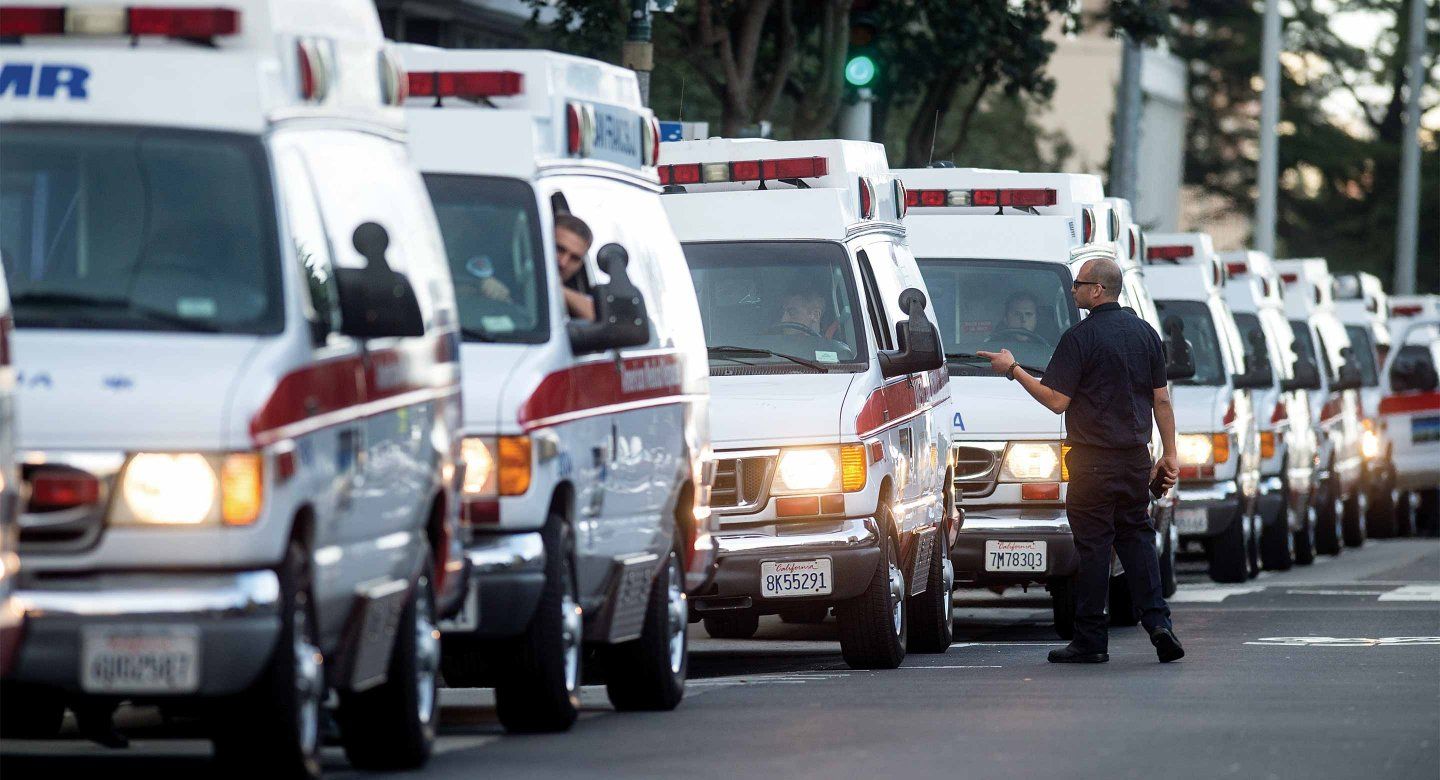
UCSF Medical Center at Mission Bay opened to its first patient – a woman about to give birth – at 7 a.m. on February 1.
Embodied in that moment was an undertaking so epic, it’s hard to know how to quantify it: In tons of steel welded or miles of pipe laid? In acres of earth turned or a decade of meetings logged? No matter the metric, the process went without a hitch.
MED CENTER BY THE NUMBERS ➤ 9,272 tons of steel, enough to build 8,000 cars ➤
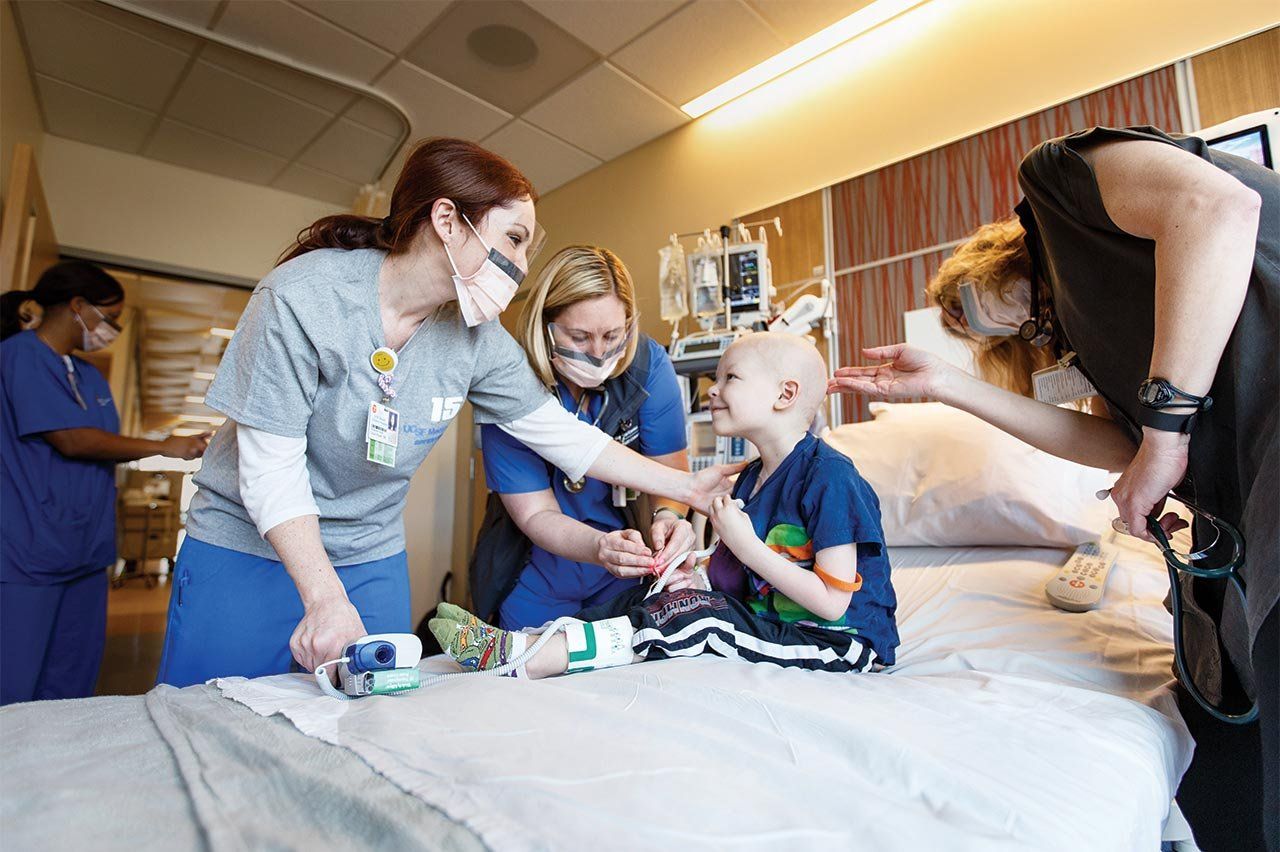
Photo: Steve Babuljak
Incoming
Five-year-old Rylan Macomb (above) blazed through the double doors of UCSF Medical Center at Mission Bay with hip shades, a glitter glove, and awe. The hospital was but one hour old. No one had told him the lobby would be full of fans – staff frantically waving and fawning over his unmistakably Michael Jackson-like cool.
Rylan arrived in one of the 40 ambulances lined up along Parnassus Avenue at daybreak to take 131 patients to the new Mission Bay complex. Ambulances transported 10 cancer patients from Mount Zion to Mission Bay that morning as well.
Two command centers – one at Mission Bay and one at Parnassus – orchestrated the day’s events to the minute. The move team showed up long before the ambulances. “We met at 4:30 that morning, a little bleary-eyed, to talk about every patient being transported and finalize the sequence,” says Michelle Cathcart, RN, who directed the patient move with Scott Soifer, MD, vice chair of pediatrics.
The team had carefully calibrated the list, discussing it every afternoon for the previous two weeks. Which patients would need ventilators or the incubating units known as Isolettes? What experts (and medications) did each patient need to travel with – a bedside nurse, a physician, or a respiratory therapist...or all three?
The most complex patient was a child with the flu who was supported by a heart-lung machine. “We sat with the mom and told her that the ambulance would have two doctors, one being the child’s surgeon, someone who ran the pump machine, and two nurses,” says Soifer. The team did three practice runs, with equipment, for this child.
“Seeing that that patient left within two minutes of her assigned time and hearing that they made it there safely – those were my moments that day,” recalls Cathcart. “I thought, ‘This is finally real. We did it.’”
➤ 12,451 light fixtures, enough for 1,000 homes ➤ 85 miles of piping, the equivalent of 50 Golden Gate Bridges ➤
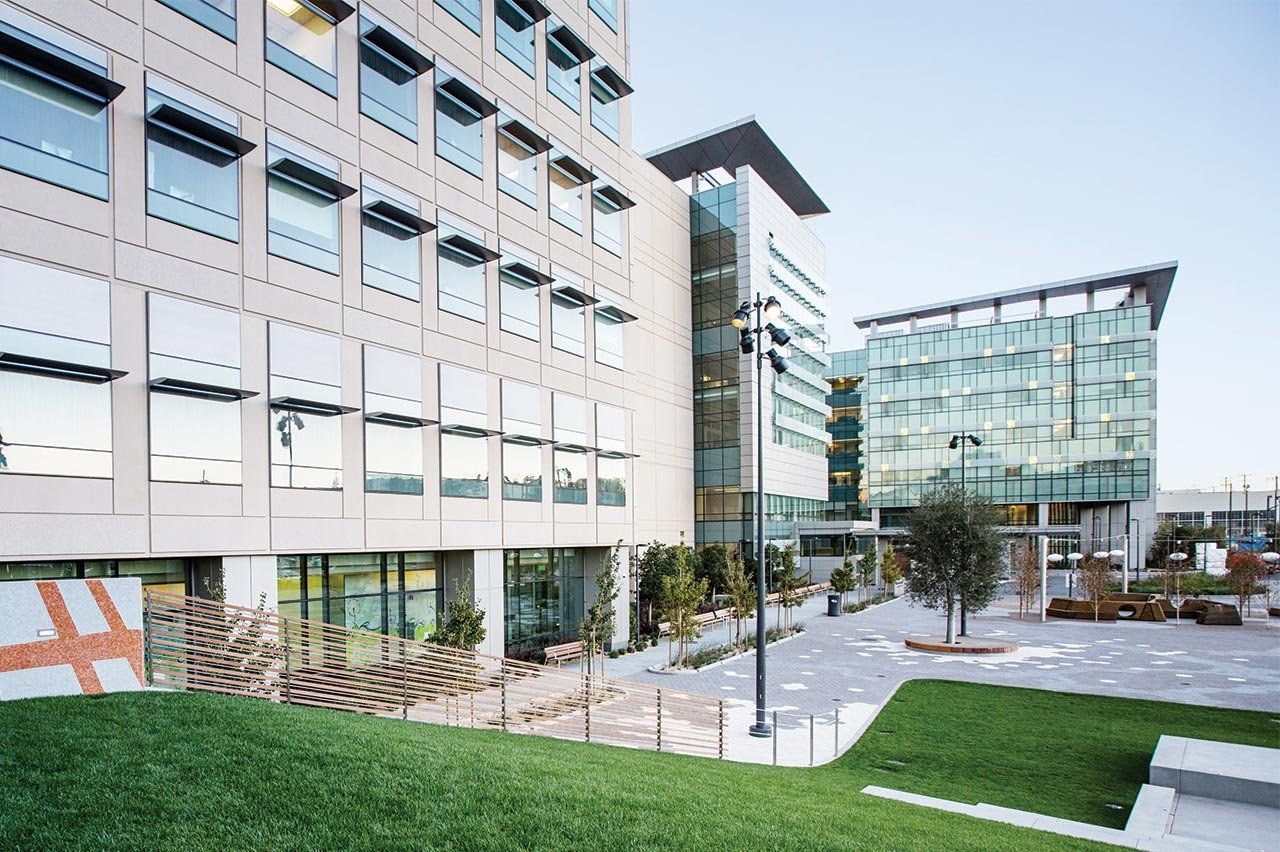
Photo: Elisabeth Fall
Hospitals
UCSF Medical Center at Mission Bay comprises UCSF Ron Conway Family Gateway Medical Building, UCSF Benioff Children’s Hospital San Francisco, UCSF Betty Irene Moore Women’s Hospital, and UCSF Bakar Cancer Hospital.
The 70-bed UCSF Bakar Cancer Hospital, located across campus from the UCSF Helen Diller Family Cancer Research Building, will facilitate collaboration between clinicians and basic scientists.
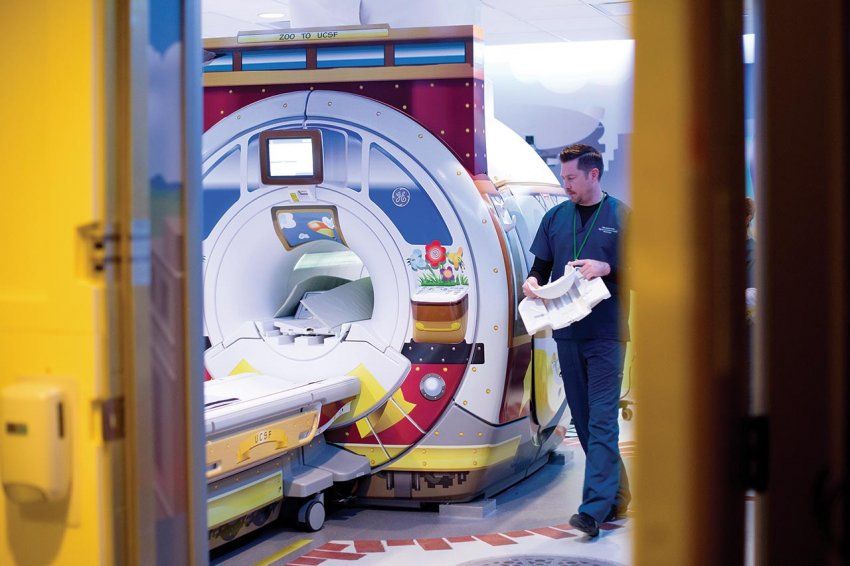
Photo: Noah Berger
Transport
The Imaging Theater at Mission Bay takes the anxiety out of CT and MRI scans for adults and children alike by projecting calming images, live video, light shows, and surround sound to distract and soothe patients during procedures.

To make the February 1 opening date, UCSF completed a colossal to-do list:
- 40,000 pieces of equipment installed
- 20,000 pieces of equipment tested and certified by clinical engineers
- 25 automated robots (pictured) programmed to travel safely from building to building
- 5 wireless networks installed, including a stand-alone child abduction network
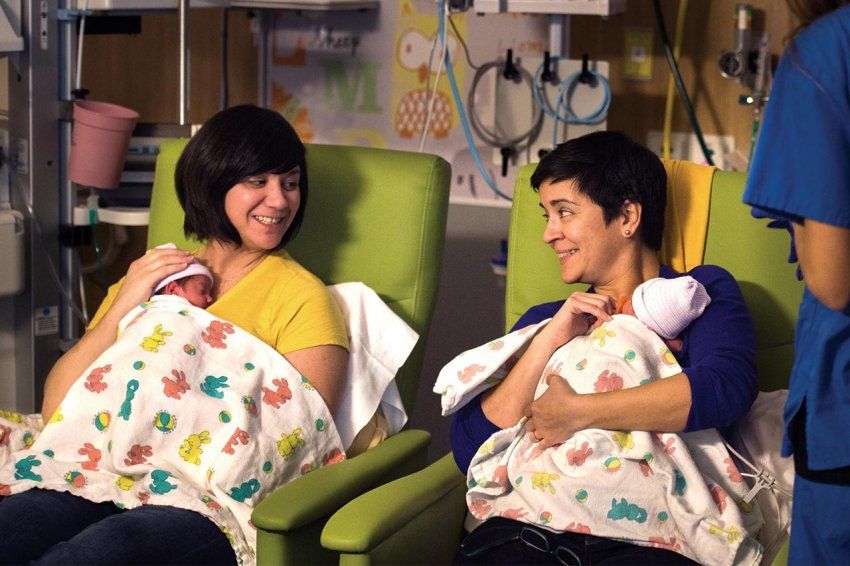
Photo: Deanne Fitzmaurice
Special Delivery
Two-week-old twins Bianca and Sienna were the first patients transported to Mission Bay, arriving safely with their moms just before 8 a.m.
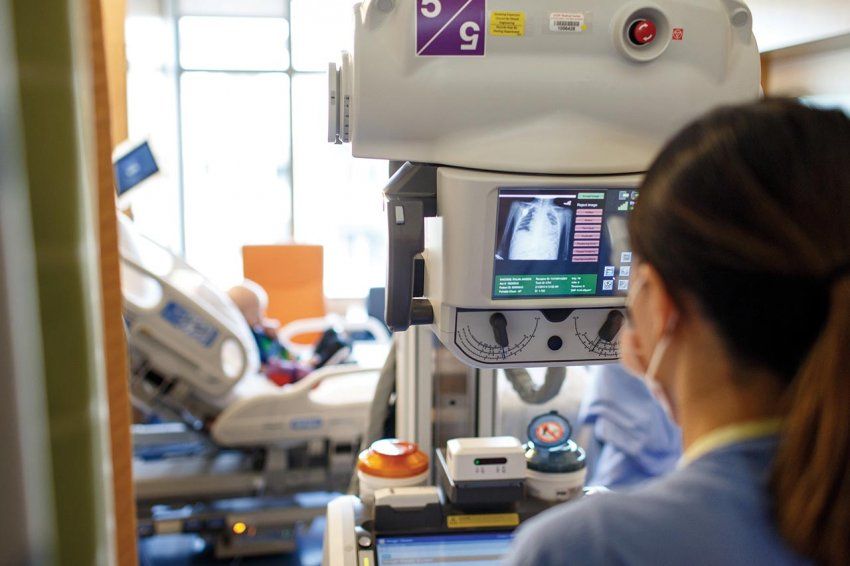
Photo: Steve Babuljak
Quick Peek
Rylan didn’t have to leave his room for a chest X-ray; a mobile X-ray machine came to him.
➤ 210 miles of conduit, enough to stretch along 3,360 San Francisco blocks ➤
Dream Space
Nearly a decade ago, architects and designers asked UCSF clinicians and families of longstanding patients to describe their vision of the ideal hospital. Their input can be seen in every aspect of the hospitals’ design, from the operating rooms to the roof gardens.
“These units are perfect because the clinicians and patients designed them themselves,” says Kim Scurr, executive director of UCSF Benioff Children’s Hospital and of hospital operations planning at Mission Bay.
The operating rooms are spacious and fully integrated technologically, so that during a procedure, surgeons can instantly access patient information, such as lab results and imaging studies.
UCSF partnered with GE to create an Imaging Theater to allay children’s fears of MRIs and CT scans. The theater projects calming images, live video, color-changing LED lights, and soothing stereo sounds to change the experience from frightening to transportive. Studies are currently under way to determine whether children imaged in such a space will need less medication to quell their fears.
Design determinations were made not just for the sake of functionality but also to enhance healing. Because studies show that light and quiet accelerate healing, every patient room in the hospital complex has a window with a bay or garden view. There are meditation rooms and 4.3 acres of green space, including 60,000 square feet of terraced roof gardens, where adult patients can achieve a sense of renewal or a change of perspective or work on their physical therapy. For children, there are both indoor and outdoor play areas.
➤ 1,125 miles of wire, enough to circle the bases at AT&T Park 16,500 times ➤
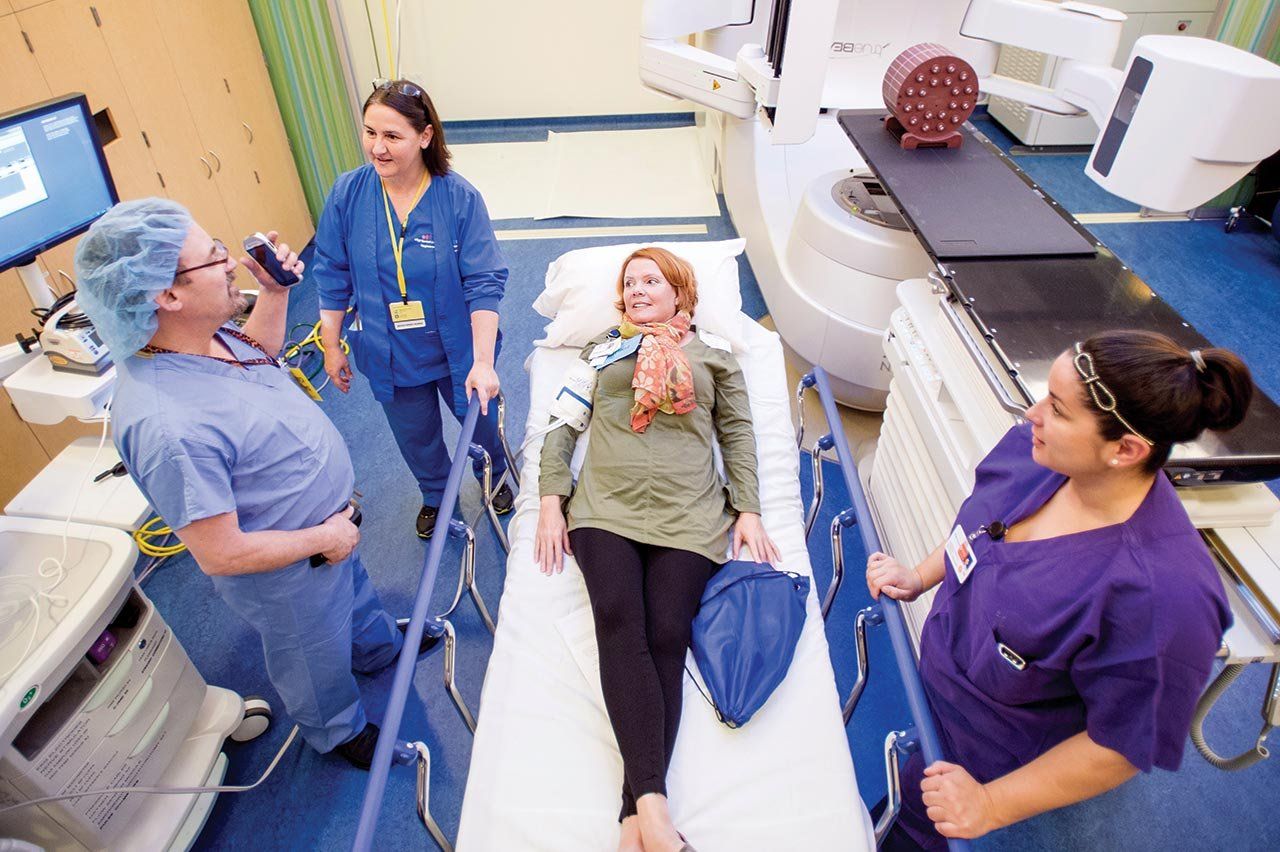
Photo: Tom Seawell
Code Blue
During a “day in the life” rehearsal, a UCSF staffer posed as a patient suffering a seizure during an imaging procedure. Trainers timed physicians and nurses as they grabbed a crash cart filled with tools needed to open an airway – defibrillator, medications, and intubation equipment – and rushed to the scene to stabilize the “patient.”
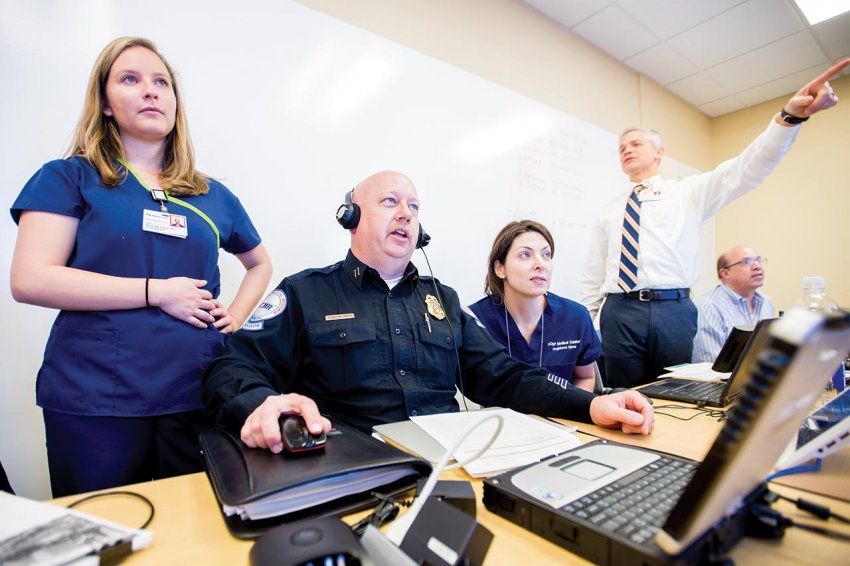
Photo: Noah Berger
Command Center
Physicians, nurses, police, and the City of San Francisco’s disaster planning manager staffed UCSF’s two command centers – at Mission Bay and Parnassus.
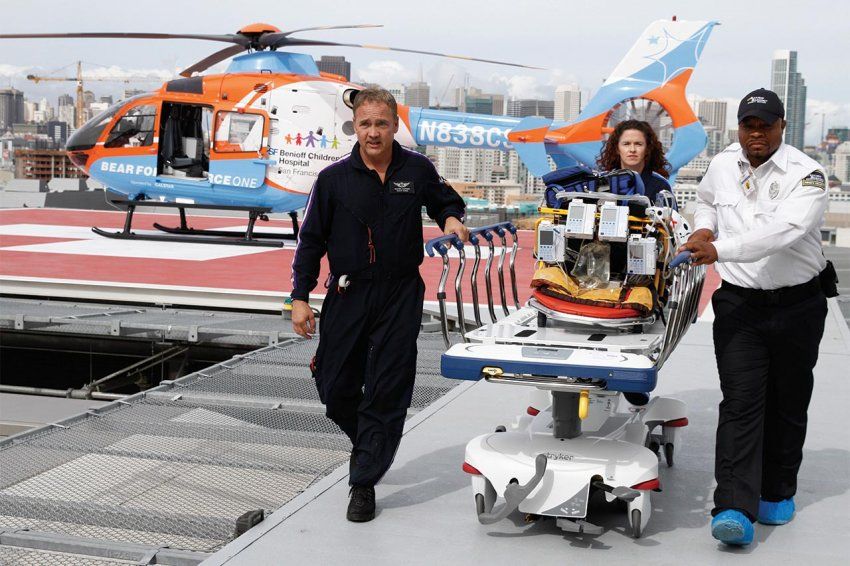
Photo: Paul Sakuma
Landing
Housed at Oakland International Airport, Bear Force One has a dedicated team of pilots, mechanics, and nurses who transport critically ill newborns, children, and pregnant women from outlying hospitals to the medical center’s rooftop.
➤ 3.3 million feet of drywall, enough to stretch from Mission Bay to Yosemite if laid end to end ➤
Practice Makes Perfect
Becoming fully operational in a new medical center takes more than studying floor plans and organizational charts. It takes rehearsal – early, often, and on location. To ensure they could function safely and tactically in the new space, more than 800 clinicians and other staff participated in a series of three “day in the life” rehearsals at Mission Bay.
During the first exercise, clinicians and staff practiced transporting a critically ill newborn via helicopter, with a doll playing the starring role. Bear Force One, a helicopter that flies seriously injured or ill newborns, children, and pregnant women from outlying hospitals, landed safely on the rooftop helipad, the only hopsital helipad in San Francisco. A UCSF nurse pushing the “newborn” in an Isolette, dashed out from beneath the beating blades. The staff were timed as they made their journey from the pad to the neonatal intensive care unit.
People realized this was history in the making: the first free-standing children’s hospital in San Francisco. I cannot tell you how many people volunteered to ready Mission Bay. It was a labor of love.”
“We discovered that certain paths of travel didn’t have automated door openers, so teams were crashing through,” says Pamela Hudson, executive director of clinical systems and of the Mission Bay transition. “Clearly, more of the 3,500 doors in the facility needed to be automated, so we installed more to cut down on patient transfer time.”
Over the course of the three day-long exercises, staff and faculty ran five mock moves and rehearsed 177 scenarios. “By the third ‘day in the life,’ they had cemented all they learned,” says Hudson. “Supplies were in the right location. Everybody knew where the crash cart was in case someone had a heart attack or respiratory event. We were ready.”
“Patient safety was our top priority during the patient move, along with minimizing disruption to our neighbors. We achieved both goals, thanks to the superb work of our medical center faculty and staff, as well as our partners in the City of San Francisco,” says Mark Laret, CEO of UCSF Medical Center and UCSF Benioff Children’s Hospitals. “We were looking forward to February 1 for some time, and the opportunity to start providing care in our new location at UCSF Mission Bay.”
➤ 1,783,000 pounds of ductwork, enough to make three 747 airliners ➤
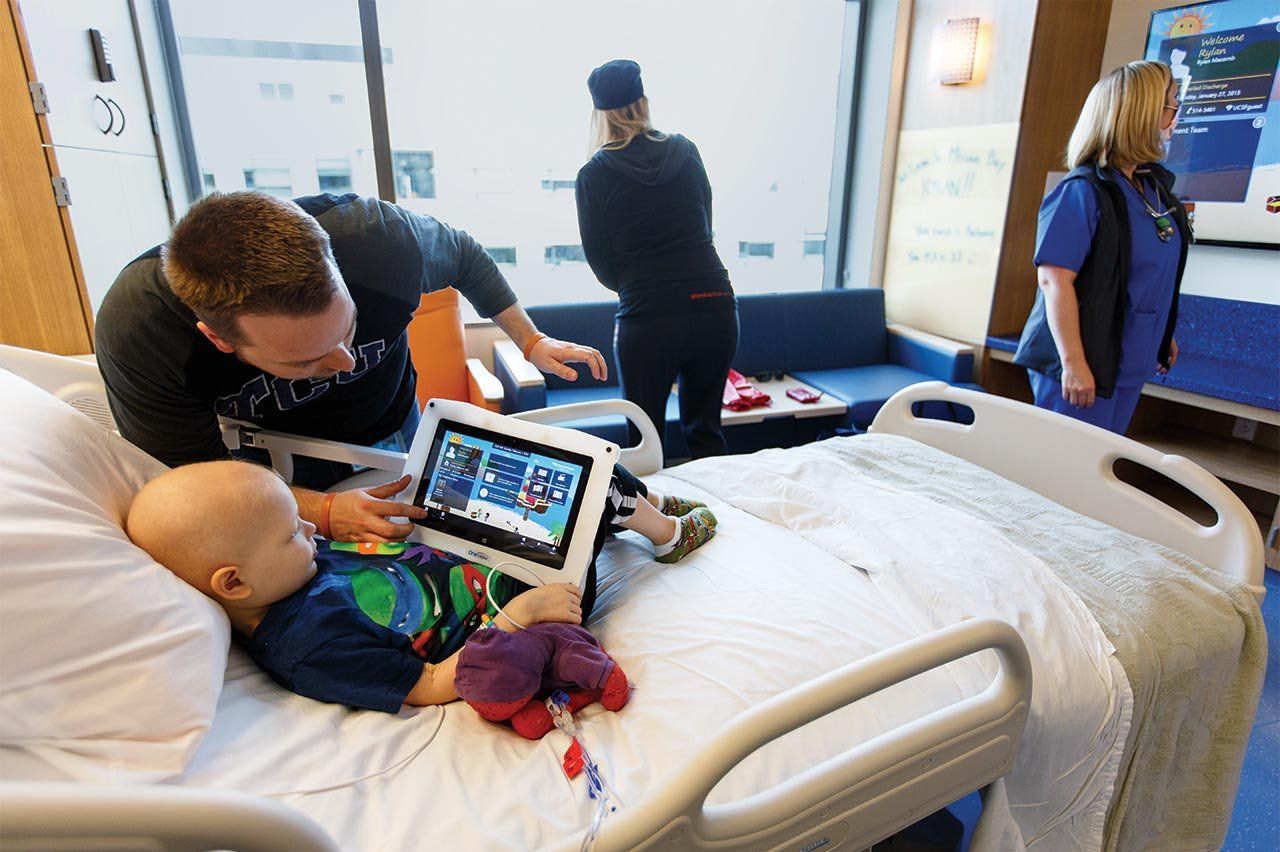
Photo: Steve Babuljak
Settling In
While Rylan’s mom checked out the garden view from the picture window, Rylan and his father played video games and scrolled through 192 TV and movie channels on the OneView. Displayed across the room on a 65-inch monitor, OneView also engages patients in their care. They can interact with their care team, see lab and imaging results, and learn about upcoming procedures. Patients can even Skype with teachers or loved ones.
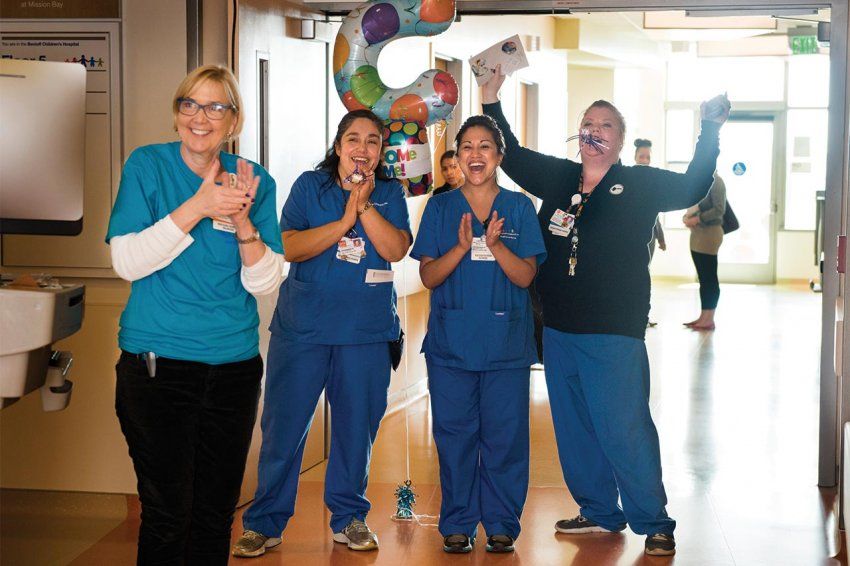
Photo: Steve Babuljak
Homecoming
Four nurses welcomed the final transferred patient at 3:32 p.m. – all 131 were safe and sound!
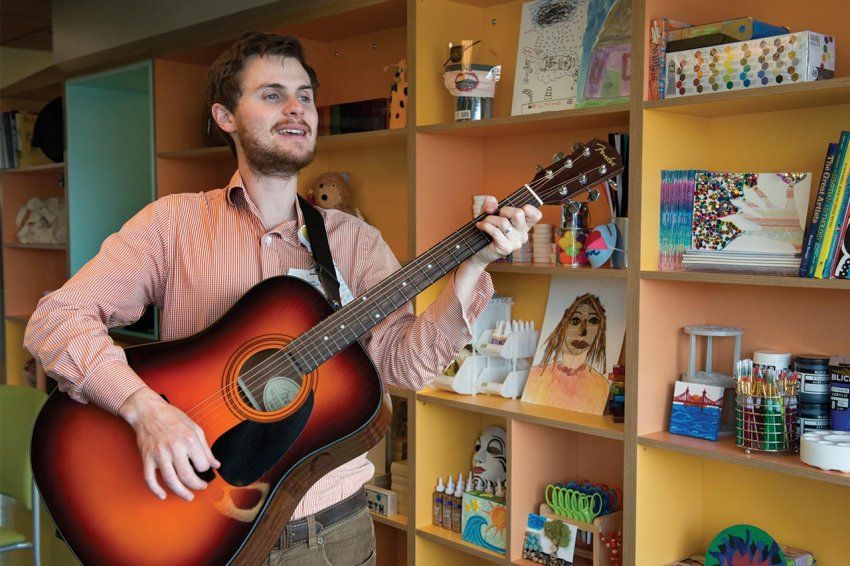
Photo: Deanne Fitzmaurice
Compose
Oliver Jacobson, a music therapist at UCSF Benioff Children’s Hospital San Francisco, wrote an opening-day song for the occasion.
Raising our Sights
“I loved watching the kids’ faces as they came through the doors,” says Michael Towne, manager of Child Life Services. “They were wide-eyed and excited, taking in all the color, the light, the space.”
Children and teens entered a zone built especially for them – a place where kids can do more than endure and heal from an illness. The hospital features a creative arts studio with art therapists and artists-in-residence who can help children and teens immerse themselves in poetry, dance, music, painting, crafts, or performances – to either escape from or find meaning in what they are going through.
In a broadcast and digital studio, kids can create music, films, or news programs that can be aired throughout the complex. There is a playroom for younger kids and a teen room equipped with foosball, crafts, board games, and video games. Each space is designed to foster creativity and interaction.
Adults have access to outside spaces, meditation rooms, and art therapy studios, so they, too, can delve deeply and privately into healing and meaning. “Many hospitals have some of our programs, but none have all of them,” says Towne. “There is something about the synergy we have created here. I am so excited to see how it changes the experience of their illness.”
Towne recalls a former patient with a long, complicated illness. She had rejected piano lessons forced on her in early childhood. A child life specialist brought her a keyboard. Now, years later, she is a singer-songwriter. “She told me that her illness was her gift. She found herself as a person, with a voice and a passion for life, because of it,” says Towne.
In a new space – where so much thought, creativity, and state-of-the-art resources have been brought to bear on child and adult patient care – the experience will no doubt be all the more transformative. “I think the crucible of illness is fear. It’s scary to be sick,” says Towne. “What we are doing here is giving patients ways to do more than just get through it. With art or music, they may discover who they are.”
